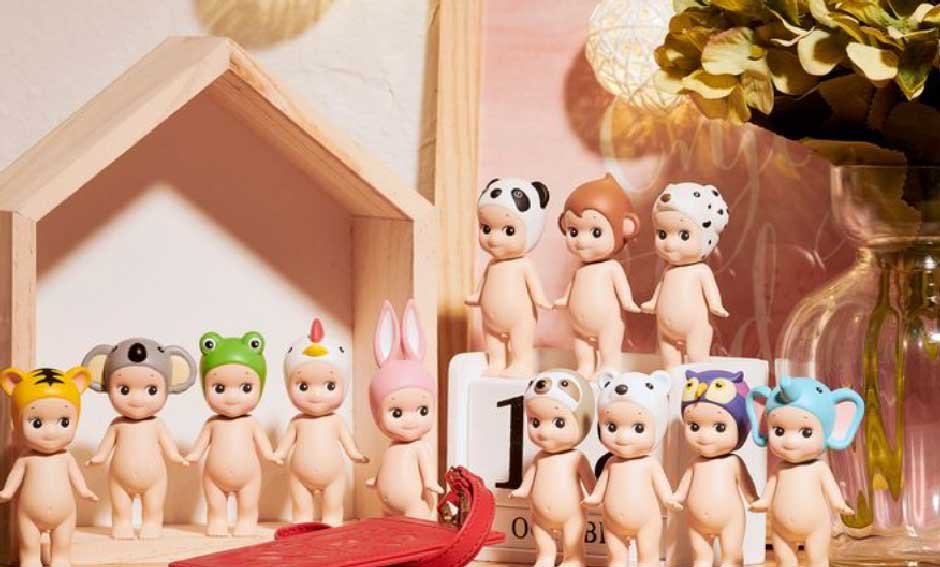Skip to the good bit
ToggleIntroduction: The Cultural Tapestry of Japanese Collectibles
Japan’s collectible culture is a fascinating blend of ancient tradition and cutting-edge modernity. From intricately crafted traditional dolls to the whimsical, pastel-hued characters of today, these items are more than mere toys—they are cultural artifacts, emotional companions, and economic powerhouses. Among the most captivating modern examples is Chiikawa, a minimalist, ultra-kawaii (cute) character series that has taken global fandoms by storm. This article explores the evolution of Japanese collectible dolls, their cultural significance, and the reasons behind the meteoric rise of Chiikawa, offering insights for collectors and enthusiasts alike.
Traditional Japanese Dolls – Guardians of Heritage
The History and Symbolism of Japanese Dolls
Japanese dolls (ningyō) date back over 1,000 years, rooted in Shinto rituals where they served as talismans to ward off evil spirits or represent deities. Key traditional types include:
- Kokeshi Dolls: Originating from Tohoku, these wooden, limbless dolls symbolize wishes for health and fertility.
- Hina Ningyō: Displayed during the Hinamatsuri (Doll Festival), these elaborate dolls represent the Imperial Court and protect young girls.
- Daruma Dolls: Modeled after Bodhidharma, the founder of Zen Buddhism, these round, red dolls symbolize perseverance.
Cultural Significance: Traditional dolls are imbued with stories, regional identity, and spiritual meaning. Craftsmanship is revered, with techniques passed down through generations.
The Artisan Economy
Despite modernization, traditional doll-making remains a thriving niche. Artisans in regions like Kyoto and Hakone preserve methods like kimekomi (wood-carving and fabric-insertion). However, aging populations threaten this heritage, prompting initiatives to attract younger buyers through contemporary designs.
The Kawaii Revolution – From Hello Kitty to Chiikawa
The Birth of Kawaii Culture
Post-WWII Japan saw the rise of kawaii aesthetics—a celebration of childlike innocence, pastel colors, and emotional warmth. Sanrio’s Hello Kitty (1974) epitomized this shift, transforming cute characters into global merchandising empires.
Psychological Appeal: Kawaii culture taps into “yurukyara” (mascot culture), where cuteness evokes empathy and joy, reducing stress and fostering connections.
Modern Collectibles: Blending Art and Commerce
- Sanrio Characters: Hello Kitty, My Melody, and Gudetama dominate markets with their relatable, minimalist designs.
- Nendoroids: Good Smile Company’s chibi-style figures merge anime fandom with high-quality collectibility.
- Funko Pop! Japan Editions: Western brands adapt to Japanese tastes, collaborating with franchises like Demon Slayer.
Chiikawa – The Quintessential Kawaii Phenomenon
Origins and Design Philosophy
Created by illustrator Nagano in 2020, Chiikawa (a portmanteau of chiisai “small” and kawaii “cute”) features round, pastel-colored animals with oversized eyes and no noses. Key characters include:
- Hachiware: A hamster-like creature with honeycomb-patterned cheeks.
- Usagi: A mischievous bunny with floppy ears.
- Momonga: A snack-obsessed flying squirrel.
Design Appeal: Chiikawa’s simplicity makes it universally relatable. Its blank expressions allow fans to project their emotions, while its soft, squishable aesthetic invites tactile engagement.
The Viral Engine: Social Media and Scarcity
Chiikawa’s rise was turbocharged by platforms like Instagram and TikTok, where fans share memes, unboxing videos, and DIY crafts. Limited-edition drops (e.g., sushi-themed plushies) fuel FOMO (fear of missing out), turning each release into a social media event.
The Chiikawa plush and merch sold out within minutes online, with resale prices tripling on secondary markets.
Cultural Resonance: Comfort in a Chaotic World
In post-pandemic society, Chiikawa’s themes of simplicity and comfort resonate deeply. Its characters lack backstories or conflicts, offering a “blank slate” for escapism. As one Tokyo-based psychologist notes:
“Chiikawa’s minimalism provides a mental safe space. It’s a form of self-care for overwhelmed adults.”
The Economics of Cute – Market Trends and Consumer Behavior
The Global Collectibles Market
Japan’s character goods market is valued at $16 billion annually, with kawaii merch driving cross-industry collaborations (e.g., Chiikawa x Starbucks Japan). Key trends:
- Adult Collectors: 70% of Japanese collectible buyers are aged 20–50, challenging the “toys are for kids” stereotype.
- Licensing Boom: Brands like Uniqlo and Muji now feature kawaii collabs to attract younger demographics.
Sustainability Challenges
The collectibles industry faces criticism for plastic waste and overproduction. Innovators like Rascal House (Chiikawa’s publisher) now use eco-friendly materials for plushies, appealing to ethically conscious Gen Z buyers.
Collecting Japanese Dolls – A Practical Guide
Starting Your Collection
- Quality Matters: Purchase curated collection of kawaii Chiikawa plushie and doll from trusted retailers.
- Focus on Themes: Collect by character (e.g., Hachiware-only), material (plush vs. PVC), or rarity (limited editions).
Preservation Tips
- Avoid Sunlight: UV rays fade colors on dolls and plush.
- Dust Regularly: Use soft brushes for delicate pieces like traditional Hina Ningyō.
Investment Potential
Rare items appreciate significantly. For example, a 2021 Chiikawa Gold Usagi Keychain now sells for 5x its original price. Track trends via platforms like Mandarake or Yahoo! Japan Auctions.
The Future of Japanese Collectibles
Digital Integration
- NFTs: Sanrio tested Hello Kitty NFTs in 2023, signaling a move into digital collectibles.
- Virtual Influencers: CGI characters like Imma Gram (a virtual Tokyo model) may collaborate with kawaii brands.
Cultural Diplomacy
Japan’s government promotes kawaii culture through initiatives like Cool Japan, leveraging characters like Chiikawa to boost tourism and soft power.
Conclusion: More Than Just Dolls
Japanese collectibles, from ancient Kokeshi to modern Chiikawa, are mirrors of societal values—reverence for tradition, the universal need for comfort, and the joy of self-expression. As Chiikawa continues to conquer hearts globally, it reminds us that in a fragmented world, cuteness remains a universal language.







